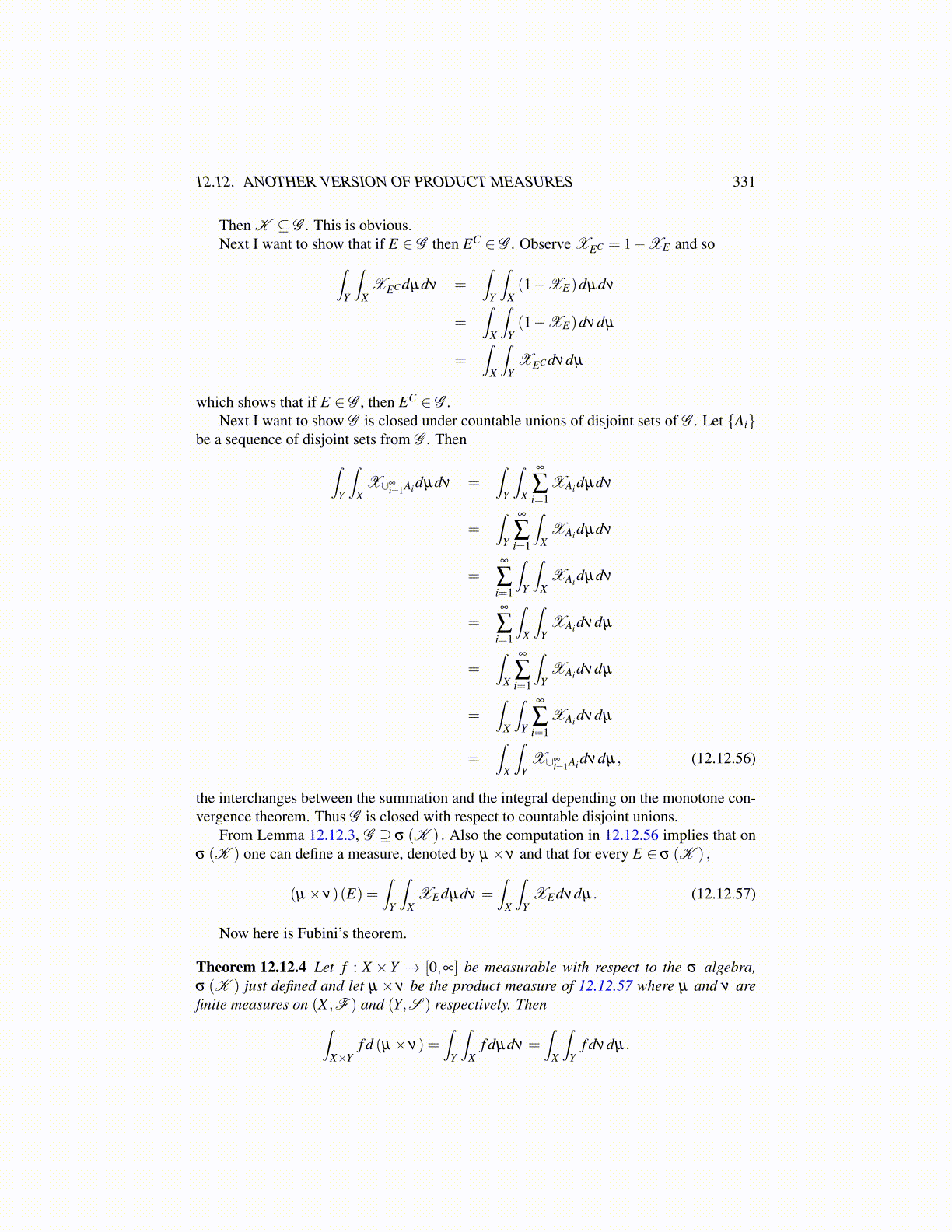
12.12. ANOTHER VERSION OF PRODUCT MEASURES 331
Then K ⊆ G . This is obvious.Next I want to show that if E ∈ G then EC ∈ G . Observe XEC = 1−XE and so∫
Y
∫X
XEC dµdν =∫
Y
∫X(1−XE)dµdν
=∫
X
∫Y(1−XE)dνdµ
=∫
X
∫Y
XEC dνdµ
which shows that if E ∈ G , then EC ∈ G .Next I want to show G is closed under countable unions of disjoint sets of G . Let {Ai}
be a sequence of disjoint sets from G . Then∫Y
∫X
X∪∞i=1Aidµdν =
∫Y
∫X
∞
∑i=1
XAidµdν
=∫
Y
∞
∑i=1
∫X
XAidµdν
=∞
∑i=1
∫Y
∫X
XAidµdν
=∞
∑i=1
∫X
∫Y
XAidνdµ
=∫
X
∞
∑i=1
∫Y
XAidνdµ
=∫
X
∫Y
∞
∑i=1
XAidνdµ
=∫
X
∫Y
X∪∞i=1Aidνdµ, (12.12.56)
the interchanges between the summation and the integral depending on the monotone con-vergence theorem. Thus G is closed with respect to countable disjoint unions.
From Lemma 12.12.3, G ⊇ σ (K ) . Also the computation in 12.12.56 implies that onσ (K ) one can define a measure, denoted by µ×ν and that for every E ∈ σ (K ) ,
(µ×ν)(E) =∫
Y
∫X
XEdµdν =∫
X
∫Y
XEdνdµ. (12.12.57)
Now here is Fubini’s theorem.
Theorem 12.12.4 Let f : X ×Y → [0,∞] be measurable with respect to the σ algebra,σ (K ) just defined and let µ ×ν be the product measure of 12.12.57 where µ and ν arefinite measures on (X ,F ) and (Y,S ) respectively. Then∫
X×Yf d (µ×ν) =
∫Y
∫X
f dµdν =∫
X
∫Y
f dνdµ.